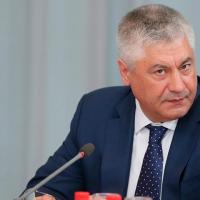Triac regulator regin. Temperature controller Pulser Temperature control. What is standard installation
Operating principle
General technical data
Degree of protection IP20.
Control circuit parameters
Inputs
Setting range
Adjustable changeover to low temperature during the night: 0…10 K from the setpoint temperature.
More
Description
Electric (triac) power regulator PULER-M is designed to control the power of single-phase and two-phase electric heaters operating from a 200/415 V mains voltage. The regulator is designed for wall mounting and is connected in series between the power supply and the electric heater.
The PULSER-M controller is equipped with a built-in temperature controller with an input for connecting an external main temperature sensor and for a minimum or maximum value temperature sensor. For room temperature control, the temperature sensor integrated in the PULSER-M can be used as the main temperature sensor.
Operating principle
Regulation is carried out by turning on and off the full load. The controller implements proportional time control by changing the ratio between the on and off times of the load in accordance with the specified heating requirements.
For example, if the load is on for 30 seconds and off for 30 seconds, this means that the heater output is 50% of the maximum. The cycle time (the sum of the time the load is on and off) is a fixed value of approximately 60 seconds.
This regulation contributes to lower energy costs and increases comfort by maintaining the set temperature. Load switching is carried out by a semiconductor device (triac).
This means that the switching device does not contain any mechanical elements subject to wear. The load is always switched at the moment when the current and voltage are equal to zero, which eliminates the occurrence of electromagnetic interference.
The PULSER-M controller automatically changes the control law in accordance with the dynamics of the regulated object.
Room temperature control
For a rapidly changing temperature PULSER-M operates as a PI controller with a fixed proportional band of 20 K and a fixed reset time of 6 minutes.
Supply air temperature control
With slowly changing temperatures, the PULSER-M operates as a proportional controller with a fixed proportional band of 2 K.
Minimum or maximum temperature limitation function
The temperature in the supply air duct, for example, can be limited to a pre-set maximum allowable value.
Adjustable reset to a lower temperature during the night
With the help of an external control device, the PULSER-M controller can be reset to a lower temperature during the night. When the contacts of the clockwork switch are actuated, the temperature setting of the regulator is reduced by a predetermined value in the range of 0…10 K.
Control of electric heaters, the power of which exceeds the maximum permissible for the PULSER-M controller
If the power of electric heaters exceeds the maximum allowed for the PULSER-M controller, then it is possible to divide the load into several heaters controlled by the PULSER-M controller together with auxiliary units (additional controllers) PULSER-ADD (see separate description 1-250).
General technical data
Electrical requirements: 200/415 VAC; 50-60 Hz; single phase or two phase. No need to manually select mains voltage.
Load current: Maximum - 16 A, minimum - 1 A.
Environment: Maximum temperature 30°C non-condensing. Note. The internal heat dissipation of the PULSER controller is 20 W.
Storage temperature: -40…+50°С.
Air humidity: Relative humidity 90% max.
Dimensions (w*h*d): 94*150*43 mm.
Degree of protection IP20.
This device complies with European EMC standards CENELEC EN 50081-1 and EN 50082-1 as well as European LVD standards for low velocity detonation IEC 669-1 and IEC 669-2-1 and bears the CE mark.
Control circuit parameters
Proportional band: 2 K, fixed (for rapidly changing temperature, i.e. for supply air temperature control).
Reset time: 6 minutes, fixed (for rapidly changing temperature, i.e. for supply air temperature control).
Proportional band: 20 K, fixed (for slowly changing temperature, i.e. room temperature control).
Cycle duration: 60 seconds, fixed.
Indicator: An LED that is on when the load is on.
Inputs
Thermal sensor: Two (2) inputs. One each for the main sensor and one for the limit temperature sensor. Sensor selection is described in Section 6-100.
Setpoint: Adjustable with built-in potentiometer or external setpoint.
Setting range
Setting: 0…30°С. The setting range of the controller is determined by the choice of temperature sensor.
Limitation of maximum/minimum temperature Determined by the type of connected sensor. For sensor type TG-K330, the range is 0…30°C.
Adjustable reset to a lower temperature during the night: 0…10 K from the setpoint temperature.
Temperature control is carried out by turning on and off the full load. The Pulser 230 implements proportional time control by varying the ratio between on and off time according to the set heating requirement. The cycle time (the sum of the time of the on and off state of the load) is fixed and equal to 60 sec. The load switching is carried out by a triac, due to which there are no mechanical elements subject to wear in the switching device. Load switching always occurs at zero point (current and voltage are equal to 0), which eliminates the occurrence of electromagnetic interference, reduces power consumption and increases equipment uptime.
The controller changes the control mode between proportional and proportional-integral in accordance with the dynamics of the regulated object. The regulator automatically selects the voltage when operating with a load of 230/400 V. Using an external switch, the regulator can be reset to a lower temperature during the night.
Application areaTriac Regulator Pulser 230 is designed to maintain temperature by controlling the power of single-phase or two-phase electric heaters. It is connected in series between the power supply and the electric heater. The controller is equipped with a built-in sensor (used for room temperature control) and a temperature adjuster, as well as terminals for connecting an external temperature sensor.
What is a standard installation?
The standard installation of a wall-mounted split system includes the following features:
- The length of the route between the blocks of the split system is no more than 5 meters;
- Inter-unit communications indoors (from the indoor unit of the air conditioner to the hole in outer wall) are covered with a decorative plastic box (without chasing the tracks);
- The external unit of the air conditioner is installed under the window, using standard brackets;
- Electricity is supplied "to the outlet";
- Drainage is displayed on the street.
Installation is possible with free access to that section of the wall of the room where it is located indoor unit conditioner.
In addition, it is necessary to be able to fully open the window through which the installation of the outdoor unit is planned. At
it is only allowed to install an outdoor unit from 5.5 kW at a height of three meters
with the participation of an industrial climber, whose services are not included in the price of air conditioning installation.
For more information on pricing installation work You can take a look.
Systemair is a famous Swedish company. In 1974, it was called L.H.G. Kanalflakt AB. Fans for ventilation systems, as well as other heating equipment ....
Temperature control is carried out by turning on and off the full load. The Pulser implements proportional time control by varying the ratio between on and off time according to the set heating requirement. The cycle time (the sum of the time of the on and off state of the load) is fixed and equal to 60 sec. The load switching is carried out by a triac, due to which there are no mechanical elements subject to wear in the switching device. Load switching always occurs at zero point (current and voltage are equal to 0), which eliminates the occurrence of electromagnetic interference, reduces power consumption and increases equipment uptime.
The controller changes the control mode between proportional and proportional-integral in accordance with the dynamics of the regulated object. The regulator automatically selects the voltage when operating with a load of 230/400 V. Using an external switch, the regulator can be reset to a lower temperature during the night.
|
Model |
Description |
Price |
|
Pulser |
Triac temperature controller, max. load 3.6 kW (230 V, 1 phase) or 6.4 kW (400 V, 2 phases), wall mounting |
101 |
|
Pulser-M |
Triac temperature controller with min./max. temperature, max. load 3.6 kW (230 V, 1 phase) or 6.4 kW (400 V, 2 phases), wall mounting |
117 |
|
Pulser220X010 |
Triac power module controlled by an external signal 0?10 V, max. load 3.6 kW (230 V, 1 phase), wall mounting |
142 |
|
Pulser380X010 |
Triac power module controlled by an external signal 0?10 V, max. load 6.4 kW (400 V, 2 phases), wall mounting |
142 |
|
Pulser/D |
Triac temperature controller, max. load 3.6 kW (230 V, 1-phase) or 6.4 kW (400 V, 2-phase), DIN rail mounting |
101 |
|
Pulser-X/D |
Triac power module controlled by an external signal 0?10 V, max. load 3.6 kW (230 V, 1-phase) or 6.4 kW (400 V, 2-phase), DIN rail mounting |
144 |
|
Pulser-ADD |
Additional power module for the Pulser series, max. load 3.6 kW (230 V, 1 phase) or 6.4 kW (400 V, 2 phases), wall mounting |
101 |
|
TTC2000 |
Triac temperature controller, max. load 17 kW (400 V, 3 phases), min./max. temperature, wall mounting |
517 |
|
TTC25 |
Triac temperature controller, max. load 17 kW (400 V, 3 phases), min./max. temperature, 0...10 V, DIN-rail mounting |
453 |
|
TTC25X |
Triac power controller controlled by an external signal 0?10 V, max. load 17 kW (400 V, 3 phases), DIN rail mounting |
417 |
|
TTC40F |
Triac temperature controller, max. load 27 kW (400 V, 3 phases), min./max. temperature, 0...10 V, DIN-rail mounting |
575 |
|
TTC40FX |
Triac power controller controlled by an external signal 0?10 V, max. load 27 kW (400 V, 3 phases), DIN rail mounting |
528 |
|
TTC63F |
Triac temperature controller, max. load 43 kW (400 V, 3-phase), min./max. temperature, 0...10 V, DIN-rail mounting |
769 |
|
TTC80F |
Triac temperature controller, max. load 55 kW (400 V, 3 phases), min./max. temperature, 0...10 V, DIN-rail mounting |
915 |
|
TT-S4/D |
Stepper controller for TTC series. 4 relay outputs 2 A, 250 V, supply voltage 24 V, DIN rail mounting |
270 |
|
TT-S6/D |
Stepper controller for TTC series. 6 relay outputs 2 A, 250 V, supply voltage 24 V, DIN rail mounting |
338 |
|
Potentiometerfor temperature set point (REGIN) |
||
|
TBI-30 |
Temperature controller for Pulser and TTS, range from 0 to +30°С, panel mounting, IP20 |
|
Triac temperature controllers are designed to regulate and maintain the set temperature by changing the power of single-phase, two-phase, three-phase electric duct electric heaters.
Peculiarities: Power regulation occurs by changing the time of turning on and off the full power of the heater. The cycle time is set in the range of 6-60 seconds. Load switching is carried out by semiconductor devices (triacs) at the moment when the current and voltage on the heater are equal to zero.
Regulation modes: Regulators operate in proportional/integral control mode with a fixed proportional band of 20 K and an integration time of 6 minutes. For slowly changing temperatures, the controllers operate in proportional control with a fixed proportional band of 2K.
Temperature controllers Regin Pulser designed to maintain the set temperature by changing the power of single-phase and two-phase electric heaters. The power is controlled by changing the time of switching on and off the full power of the heater (proportional control over time). The cycle time is approximately 60 seconds.
General characteristics of the Pulser temperature controller
Load switching is carried out by a semiconductor device (triac) at the moment when the current and voltage on the heater are equal to zero. This reduces power consumption, eliminates electromagnetic interference and increases equipment uptime.
The Pulser temperature controller is equipped with a built-in temperature sensor and has contacts for connecting an external temperature sensor.
The Regin Pulser temperature controller automatically changes the control law in accordance with the dynamics of the control object. For rapidly changing temperatures, such as supply air temperature control, the Pulser operates in PI control mode with a fixed proportional band of 20 K and an integral time of 6 minutes. For slowly changing temperatures, such as room temperature control, the Pulser operates in proportional control with a fixed proportional band of 2K.
The Regin Pulser temperature controller provides for reconfiguration using an external switch, for example, a timer for a lower temperature at night
period in the range dТ = 0-10 K.
Temperature controller Systemair Pulser
Characteristics
- Voltage 230/400 V
- Phase 1/2 ~
- Frequency 50 Hz
- Current 16 A
- Heating power max. 3600/6400W
- Adjustable temperature range 0..30 °C
- Temperature drop during the night 0..10 °C
- Permissible temperature range environment 0..30 °C
- Permissible relative humidity range 0..90 %
- Enclosure class 20 IP
- Weight 0.32 kg
- Width 94 mm
- Height 150 mm
Description
The triac controller Pulser is designed to maintain temperature by controlling the power of single-phase or two-phase electric heaters. It is connected in series between the power supply and the electric heater. The controller is equipped with a built-in sensor (used for room temperature control) and a temperature adjuster, as well as terminals for connecting an external temperature sensor.
Temperature control is carried out by turning on and off the full load. The Pulser implements proportional time control by varying the ratio between on and off time according to the set heating requirement. The cycle time (the sum of the time of the on and off state of the load) is fixed and equal to 60 sec. The load switching is carried out by a triac, due to which there are no mechanical elements subject to wear in the switching device. Load switching always occurs at zero point (current and voltage are equal to 0), which eliminates the occurrence of electromagnetic interference, reduces power consumption and increases equipment uptime.
The controller changes the control mode between proportional and proportional-integral in accordance with the dynamics of the regulated object. The regulator automatically selects the voltage when operating with a load of 230/400 V. Using an external switch, the regulator can be reset to a lower temperature during the night.
Pulser temperature controller connection diagram:
Delivery in Moscow and the nearest suburbs
Delivery is carried out by our courier service. Cost of delivery:
- in Moscow - 250 rubles
- outside the Moscow Ring Road - 250 + 30 rubles per km
Delivery in Moscow and Moscow region is carried out daily from 09:00 to 20:00. Delivery on weekends and holidays.
We can deliver your order urgently - if your order is placed before 13.00, we will deliver it on the same day until 22.00, while the delivery cost will increase by 30%
Estimated delivery time:
- in Moscow and the Moscow region from 1 to 3 days
- in Russia under the terms of the TC.
Free delivery is carried out within the Moscow Ring Road only for goods marked with the corresponding flag!
Delivery throughout Russia
We deliver to the region in two ways:
- Request an invoice for payment
- Pay the bill (delivery to shopping mall is calculated at the same rates as delivery in Moscow and Moscow Region)
- We deliver your order to the TC office and transfer it for delivery to your region
- You choose a transport company (TK)
- Request an invoice for payment
- Pay the bill
- A TC representative comes to our warehouse and picks up your order
- In this case, you do not pay for our services for the delivery of ordered goods.
![]()
Shipping Terms
- Upon delivery, the buyer has the right, in the presence of the forwarding courier, to check appearance goods and completeness of delivery.
- Verification and payment of the order must be made within a period of not more than 20 minutes.
- The forwarder is not authorized to give any advice on technical parameters goods, their cost, etc.
- Payment for goods upon delivery is carried out only in Russian rubles.
- Payment is made only in office and residential premises, or in the freight forwarder's car.
- Delivery by car is carried out to the entrance of the house specified in the order form. Delivery of goods to the apartment (office) is not carried out.
- Upon delivery to the territory with a paid entry, the buyer compensates for the cost of entry. In other cases, delivery is carried out only to the place of paid entry.
- Delivery is a separate service. It is not considered an integral part of the goods purchased by the Buyer. The delivery service ends when the customer receives the goods.
- Claims to the quality of the purchased goods that arose after its receipt are considered in accordance with the Law of the Russian Federation "On the Protection of Consumer Rights" and the company's warranty obligations.
- After you fill in all the documents, the delivery service is considered completed. The purchase of goods with delivery does not give the Buyer the right to demand a repeated delivery of the goods in case of a need for warranty service or replacement and does not give the opportunity to carry out warranty service or replacement of the goods by visiting the Buyer. The purchase of goods with delivery does not imply the possibility of a refund of the cost of the goods delivery service in the event that the Buyer is entitled to a refund for the goods in accordance with the "Law on the Protection of Consumer Rights".
 The basics of prayer - entry into prayer - prayer - catalog of articles - Islam - the religion of peace and creation
The basics of prayer - entry into prayer - prayer - catalog of articles - Islam - the religion of peace and creation Blessed Day of Ashura History of Ashura Day
Blessed Day of Ashura History of Ashura Day Learning to read namaz correctly
Learning to read namaz correctly The daughter of the Russian oligarch Elen Manasir revealed the secrets of beauty and weight loss Guest marriage Viki Manasir with her husband
The daughter of the Russian oligarch Elen Manasir revealed the secrets of beauty and weight loss Guest marriage Viki Manasir with her husband The policeman revealed the bloody secret of the murder of Tupac: the killer was hired by P Diddy
The policeman revealed the bloody secret of the murder of Tupac: the killer was hired by P Diddy Media: Lukashenka's fortune reaches $12 billion Lukashenka's fortune is estimated by Forbes
Media: Lukashenka's fortune reaches $12 billion Lukashenka's fortune is estimated by Forbes Gorovoy Alexander Vladimirovich
Gorovoy Alexander Vladimirovich